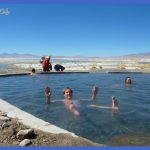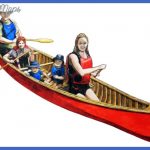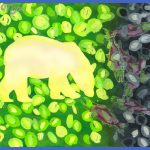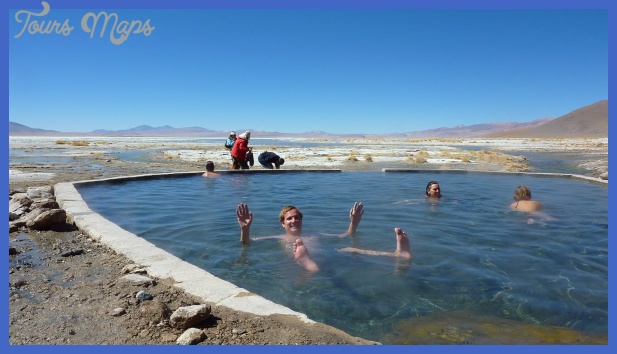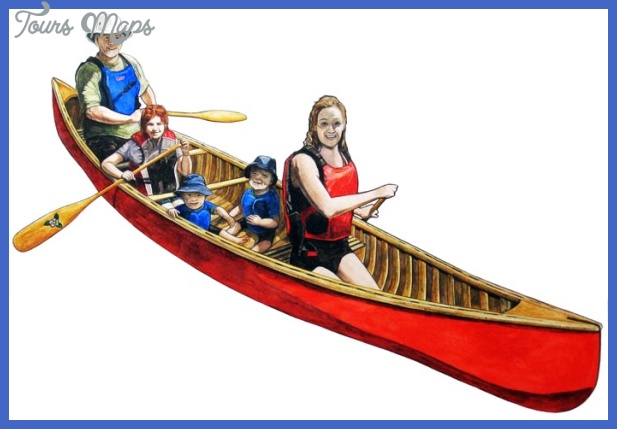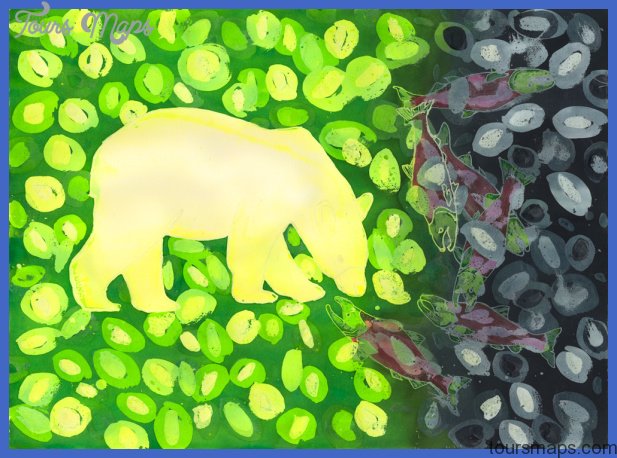My time in China was running out now. The school PADDLING INTO A WATERCOLOUR holidays had arrived and packed the already crowded trains to insufferable capacity and beyond. Some students PADDLING INTO A WATERCOLOUR wanted to try out their schoolbook English on me, which can be boring unless you take a firm hold of the conversation yourself. I asked them how many Chinese characters they could write. They thought about 3,000, but admitted a well-educated man would know 5,000. That is out of a total of over 40,000 characters. Characters, they explained, stand for ideas or concepts behind the words. Some single characters have over thirty-five strokes. The student told me that the Party tried to introduce a simplified version of Chinese script in 1978 but it didn’t work because removing strokes left too many characters ambiguous. One beauty spot I didn’t want to miss was Huangguoshu, about which I hadn’t been able to get any information on the grapevine. It seemed that no one bothered to stop there because you had to be able to speak Chinese to get to it, several hours on dirt roads south of Anshun. The only train to Anshun arrives there at 4 a. m.
I disembarked into an empty, dark and shadowy station yard. My brain was fuzzy with sleep, but I managed to cross town to the rural bus depot and dozed in a yard where two tramps were prowling. But they left me alone, and by 6 a.m. the townsfolk were beginning their day. A bus took me through tropical countryside with stone villages inhabited by minorities called Black Miao, White Miao, Flowery Miao, Rocket and Longtailed Miao, their names taken from their traditional headdresses. Huangguoshu village is perched on the rim of a river canyon looking straight at the largest waterfall in Asia. It earns the title for its sheer height and volume, which mesmerised me. I went down the cliff walk to the pool at the foot of the falls. The sun blazed down and the spray from the thundering water soaked me and created a double rainbow. A Chinese tour group arrived, carrying umbrellas. Their guide told me that today was a special day because a new cave walk behind the waterfall had been opened to the public. Her tour would be the first ever to go through it and I was welcome to join them. A pathway led us downstream to a bridge across the lower pool and back along the opposite cliff, reaching the falls at a point half-way up its side. As we entered the cave-passage the guide noticed that there were no electric lights, despite the presence of an insulated power line which should have connected a series of lights for us to see our way through the tunnels. Either it had not yet been turned on or it was already broken. She asked if the group would prefer not to try it in the dark, but even the middle-aged Chinese ladies were adamant that they wanted to make the attempt. Between the ten of us we had one torch. The passageway led into the cliff then steeply down some iron steps; it wasn’t wise to use the powerline as a handrail in case’ it was live. My companions squeaked and squealed at some of the crevices we had to squeeze through, and the stalactites which caught our heads unawares.
One had to feel almost every inch of the way; sometimes my hands encountered wonderful cauliflower shapes of cold rock. Feeling the way like this made for slow progress and when the line got halted by obstacles up ahead the human traffic jam stood hunched and bent double in a knobbly corridor, still chattering merrily while cold drips of water trickled down the backs of our necks. Natural holes in the tunnel led out behind the fall; the force of water rushing past our noses was awesome. Pits, puddles, steep steps, and pitch-dark passages. They echoed with the roar of water, and as we progressed we found more openings on to precipices behind and between the chutes. Rainbows abounded. By now I was soaked through, but didn’t mind. It took about half an hour from the start until we emerged into the dazzling sunshine on the other side of the waterfall. A man came hurrying down a path and spoke to our guide. If I’d been her I’d probably have burst out laughing at what he said, but she, being Chinese, looked embarrassed as if she’d lost face. He had asked if we wanted the electric lights turned on! Apparently the switch was at his end. This region is the land of waterfalls’. There are over seventeen major falls and I went to visit several of them. One was inside a cave system and approached by rowing-boat. Upriver from Huangguoshu was a good area for some canoe exploration; the river had interesting ledges and mini-falls, enjoyable because I didn’t mind getting wet. When I returned to Anshun to catch the 4 a.m. train I had got off three days earlier I experienced the typical China travel problem of being refused permission to sleep at the station hotel, so I said I’d wait on a bench. Someone told me to ask the luggage office for a key to the VIP waiting room, but the luggage clerk said there’s no such thing.
An hour later the hotel keeper offered me a room and also the luggage clerk came over with the VIP room key. Even though I should by now have got used to the contradictions in Chinese dealings with foreigners, they still took me by surprise. The train arrived punctually, and was so crowded that I had to sit on my luggage in the aisle. People kept warning me that anything left unattended would be stolen. The express took twenty hours to Guilin; it grew rather oppressive as the temperature outside soared to a hot and muggy 100°F. We were nearly down to sea level. The Guilin area is famous for its scenery of weirdly eroded peaks, crystal streams and caverns. It has been renowned among travellers and artists for many centuries. At a village called Yangdi I put my canoe into the Lijiang River which flows through the most beautiful part of the landscape and pulled on my floppy brimmed sun-hat. Water-buffalo wallowing in the shallows foraged underwater, long tendrils of water grasses trailing from their mouths as slowly they raised their heads to watch me pass. Behind the shores the land became craggier with tall, steep-sided hillocks. Pine trees grew from fissures in the rock. The river current was very slow and I suspected I was getting nowhere fast. It felt good. In calm bays the fishermen had strung their nets. One man on a raft was throwing a circular net with professional expertise. Fishermen here also use trained cormorants to help catch fish. The birds usually wear collars to prevent them swallowing their catch. I spent two days making idyllic progress down this river. The sun would bum off the mist, evaporating it into a hot blue sky. I pulled my sun-hat over my face and floated for a while midriver, updating my diary. Various insects landed on the canoe, a black dragonfly which folded its four wings back and went to sleep; two red and green shiny beetles and some strange housefly-grasshopper creatures that landed on my paddle. We reached the junction of a tributary and the wonderland continued with pinnacles and sharks’ teeth ridges, while the shores became sandy beaches backed by bamboo groves.
A village loomed on the opposite bank. Women were out pounding their washing on the rocks. The whole scene reminded me of an ink and wash painting, with the ripples of water ruffling its surface. The local river traffic was bamboo rafts, each made from five bamboo poles turned up at the ends to float better, and propelled punt-style by men with long bamboo poles. Some rafts en route to a market were overladen and awash, but their cargoes were safely above waterlevel in a series of baskets. Clusters of fishing barges were moored near riverside villages; many fishermen live on their boats, which are spacious plank-hulled craft with curved awnings of wood or straw matting. Their fishing nets were strung to dry among washing lines of laundry, stacks of firewood and exotic song-birds in cages. The worst hazard was caused by the motor cruisers which came ploughing their way along at top speed, travelling in convoys but trying to overtake each other, and some of them towing extra barges on long tow ropes. It gave me quite a shock when I saw an armada bearing down on me, their leaders blasting their air-homs to warn me to move over. The cruisers plied the river daily to Yangshuo carrying scores of tourists; most were Chinese though a few were Europeans. Many waved to me and by the second day when the boat crews recognised me they tooted their hooters and cheered, and slowed to avoid swamping me. After they had all passed, peace was restored and the waves diminished until only ripples lapped the sandy shores, and deep pools became mirrors for the pinnacles which towered into the sky. Yangshuo was entertaining because my paddle-connector jammed again, and to try and unscrew it I resorted to greasing the joint with pork fat which I got from a cafe. It didn’t work and most of the cafe’s clientele tried their hands at it, with as many as six men at a time pulling and twisting from both ends of the paddle. Brute force also failed, and it wasn’t until I tried using sewing machine oil, from a shoemaker, that the connector finally slid free.
The Lijiang River flows into the Pearl River and out to the South China Sea. With only three days left on my visa, I caught a bus downriver from Yangshuo to Wuzhou. The road, a minor one, led through a string of villages whose inhabitants were threshing rice in wooden threshing boxes, one for every few paddy fields. One of the satisfying things about my journey through China is to have come out of the desert early in spring when plants are young, and watched them in the changing scenery becoming mature and ripening to gold. Harvesting was now going on throughout China; it was_th culmination of a growing-season. I also felt seasoned and more complete. My journey had been fulfilling; and it seemed to have lasted longer than four months. There were two more boat-rides yet to come, but now the canoe was a passenger too. After a full day jolting along on secondary roads we reached Wuzhou, where I hoped to catch an overnight steamer down the Pearl River to Canton. I was lucky to get the last sleeping-space left. These are arranged along a platform with low partitions to stop your neighbours rolling into your space. Each space has a porthole, open for the cooling breeze, and after I’d boarded the steamer I lay looking out at the wide river, hazy in the late sun. Wuzhou was a shambles of buildings propping each other up but with more charm than the new town across the river, despite its white pagoda. My neighbour in the next berth was a heavyweight Han who managed to break the wooden partition by leaning on it. I shared my picnic supper with the family on my other side, and they gave me shrimps and home-cooked titbits. Everyone spoke Cantonese, which sounded harsh and raucous to my ears, and they could not understand my Mandarin. I slept well, and awoke to watch a pearly dawn and a small ferry with six swimming water-buffalo on ropes being led by its passengers. By the time I disembarked in Canton it was raining. It was difficult to find the quay that serves the Hong Kong ferries, but fortunately when I got there they had space on the ferry that night. After a day in Canton I boarded it, and as we steamed away from the mainland, I said goodbye to China. The three Polo travellers left China by sea.
They must have had mixed feelings after seventeen years in the East. At first, the Khan had refused them permission to go home, saying that he liked them too much. But they knew that if they did not leave before the old Khan died, they could lose their travel facilities and protection. Also at that time, a princess was being sent by the Kublai Khan to the Khan of Persia, but because of Tartar wars along the overland route she would have to travel by sea. Fourteen ships were made ready, and the Khan was persuaded to let the Polos travel aboard them because, being Venetian, they had navigational skills. They left in 1292, the voyage to Persia took two years and they arrived back in Venice in 1295. The story goes that their family didn’t recognise them, which would hardly be surprising if they were dressed in travel-worn Tartar clothes and had almost forgotten how to speak the Venetian tongue. But human nature being what it is, when they showed the jewels they were carrying, their family began to recognise their lost relatives after all. Just before the outbreak of the Second World War my grandmother left China on the Trans-Siberian railway. My mother had already left, travelling by ship with her nanny and school trunks, bound for England. I wondered what she would make of China today. To me it had been many things but above all an overwhelming emotional experience. I had travelled not as a passenger but as someone privileged to see beneath the multi-layered surfaces. The journey had left me exhausted but replete. Now I was ready for a new beginning. .
PADDLING INTO A WATERCOLOUR Photo Gallery
Maybe You Like Them Too
- Top 10 Islands You Can Buy
- Top 10 Underrated Asian Cities 2023
- Top 10 Reasons Upsizing Will Be a Huge Travel Trend
- Top 10 Scuba Diving Destinations
- The Best Cities To Visit in The World

